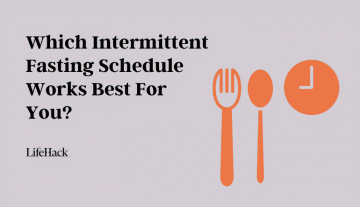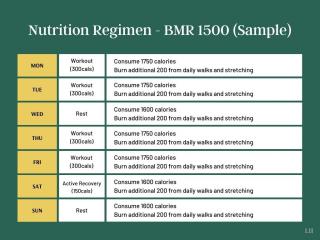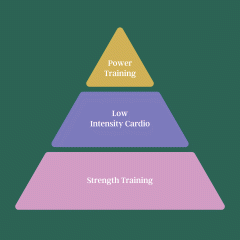According to the Oxford Dictionary, the definition of mindfulness is “the quality or state of being conscious or aware of something.” In the health and wellness industry in particular, we see this term being used interchangeably with improving mental health, reducing risks of diseases, and even revitalizing our creativity. I like to think of this term as a “power word,” and we don’t have to go far in our social literature to see it.
But what really is mindfulness? And how to be mindful? You’ll find out more about mindfulness in this article.
What Is Mindfulness?
According to the well-known meditation app, Headspace, mindfulness can be thought of as present moment awareness in whatever we’re doing. It’s a practice of being aware of our thoughts and feelings as they come up, without judgement, criticism, or attachment.
In fact, much research has been done on this topic, which sparked the creation of a questionnaire to test where people land in their mindfulness journey. If you’re interested in seeing where you land on the mindfulness scale, take the Mindful Attention Awareness Score (MAAS) here.
Now that we know what mindfulness is, let’s put it in practical terms to help us visualize it in everyday life. Take, for example, your commute to work. For many of us, traffic is an emotionally-laden experience (you can be honest, it’s OK). We may get angry when someone cuts us off, and then proceed to assume that this person is mean and generally rude. The reality is: we don’t know if that person is running late, just like us, or if they’re having a family emergency.
Our emotions and fired-up ego create narratives in our mind that then dictate our response. This not only leads to stress in that moment and for the rest of the day; it also creates habit patterns in our neurological wiring that encourage us to keep this behavior going, long-term.
Instead of approaching our work commute from this attitude, we can incorporate mindfulness by: becoming aware of our seat, how our hands feel on the steering wheel, the temperature in the car, our breathing, the visuals around us, and the noises outside and inside of the car. These are just some examples, but the idea is to be present to the experience of driving.
When we notice emotions come up when someone cuts us off or when we’re sitting in a long traffic queue, we can approach these emotions with awareness, instead of acting on them impulsively.
The beautiful thing about practicing mindfulness is that we can do it any time, anywhere. Here is a list of some practical, easy ways to stay mindful during your day.
1. Meditation
Probably one of the best ways to practice mindfulness is through meditation. This practice is centered on being present and noticing what thoughts and feelings come up.
There are many ways in which to meditate, all with personal preference and goal in mind. Starting a beginner’s meditation practice is a powerful way to introduce yourself to the many tools that this lifestyle will open up for you.
Likewise, there are a number of resources from which to learn, such as the Headspace or Insight Timer apps on your phone. These apps feature teacher-guided recordings for you to enjoy whenever, wherever.
2. Walks in Nature
Nature is everyone’s first teacher. Being outside and giving ourselves a break from work, family, and to-do lists is a beautiful and simple way to reset our entire system. Whether it’s a stroll in your favorite park or going for a long-day hike, being outside lends many ways in which to practice mindfulness.
In fact, there is an entire movement dedicated to this, called Forest Bathing. The idea is to open yourself up to the present moment and action of walking outside: feeling the earth beneath your feet, how firmly or softly you step on the ground, the smells and noises around you, and what thoughts, feelings, or memories this brings up for you.
Nature walks can be incredibly therapeutic. Staying in that present moment and letting go of the day gives room for creativity, clarity, and deep inner connection.
3. Journaling
There is nothing more present than sitting down with your thoughts and giving them an expressive outlet. Writing is another therapeutic tool at your disposal, in which you can find a rich mindfulness practice.
Journaling may look like keeping a diary, or it may be choosing to write down thoughts or experiences that feel particularly heavy or confusing. This practice very often leads to clarity and uncovering a new perspective on a situation you may have not considered.
Whether you write about something serious that happened or pen a letter to a dear friend or loved one, the practice will bring you back to present awareness. See if you can really settle into this space. It is rich.
Learn about the 5 Powerful Ways Journal Writing Changes Your Life.
4. Playing with Your Pet
This is one way of being mindful and absolutely loving it! Cuddles with our pets are some of the most precious moments, and they are deeply rooted in present-moment awareness. Not only does it bring you out of mental overdrive, but it has also been found to alleviate depression, curb anxiety, and lower high blood pressure! Here’s Why Keeping Pets Gives You Positive Energy.
Next time you have a few minutes, throw that ball with your dog or whip out the feather toys with your cat. Not only will they appreciate it, but you can notice the ways in which you sink into the present moment. Enjoy it!
5. Cooking a Meal
You can follow a recipe and become tuned into the ingredients, how long to cook, plating the food, and everything in-between. This practice creates a magical connection between you and the food that will nourish you.
But if you have a favorite dish that you love preparing and don’t need to follow a recipe, take this approach to learn something new. We often make familiar meals on a whim, and in a way that is automated.
See if you can take a different, mindful approach here and cook your meal slowly and deliberately. Can you smell each fruit or vegetable before you cut it? Can you tune into the noises of food sizzling as it’s being cooked, or even the noise of the utensils or knife on the chopping board? What emotions or thoughts come up as you prepare this meal? Let it be an experience for all the senses.
6. Eating Mindfully
Just as the prior point above explains, mindfulness in the kitchen can be an experience for all the senses. Once you’re done cooking your meal (or if someone is cooking for you), another way to practice mindfulness is to be aware of how you eat.
So often, we chew our food quickly, or are distracted by external stimuli, like a TV or our phone. Try practicing being aware of your meal time: smelling the food, noticing the colors and textures, chewing slowly and fully to activate all the flavors, and pausing between each bite. This will not only help you savor the experience, but it will also help you decide when you’re actually full. It is a well-known dieting technique shown to have positive benefits. Start to eat mindfully.
7. Active Co-Listening
This is a practice that is powerful in our personal and professional relationships and friendships. How many times can you recollect listening to a friend’s story and at the same time, planning on what you’re going to say in return?
All of us, at some point or another, have zoned out or pulled into our own mental chatter with someone in conversation. A co-listening practice is wonderful in helping us stay present to another person. It also teaches us to how to hold space for someone who is sharing, so that we become more empathetic.
Next time you’re having a conversation, tune into what the person is saying: follow their narrative, invest in their courage to want to share something, and notice their words and body language. These are small gestures that speak volumes!
All of us want to be heard and acknowledged. Your mindful practice of co-listening puts out into the Universe that you deserve the same in return; and you do!
Final Thoughts
A mindfulness practice is a simple commitment to staying present to whatever you’re doing. Whether you’re in traffic, at work, with loved ones, or alone, you can practice slowing down and becoming aware of what’s going on around you and within you. This will greatly benefit your mental, physical, and emotional health, as well as the relationships you nurture in your life and community.
More About Practicing Mindfulness
Featured photo credit: Larm Rmah via unsplash.com





























































